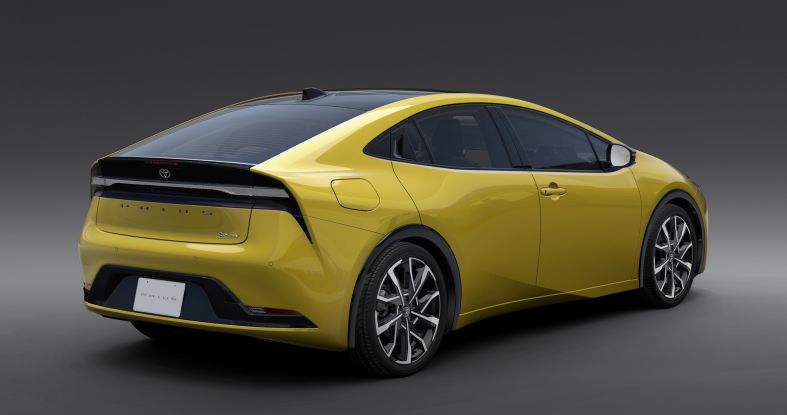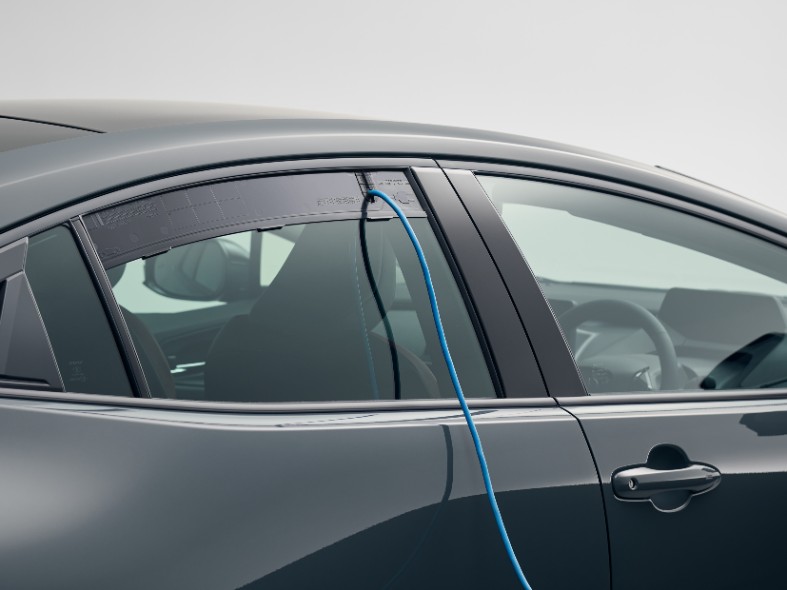Toyota's Redesigned Prius May Get More Drivers Behind the Wheel of a Hybrid Vehicle
【Summary】Toyota has completely redesigned the Prius and its sleek looks and improved performance just might get more drivers behind the wheel of a hybrid vehicle. The new Prius may also attract buyers that are looking for a more affordable alternative than purchasing a fully-electric vehicle. The improved lithium ion battery allows the Prius to operate on EV-only mode for most daily commutes.

Way before electric automaker Tesla came along, Japan's Toyota Motor Corp launched the hybrid Pruis in 1997, making it the world's first mass-produced hybrid vehicle on the market.
Over the years, Toyota sold over 5 million Prius models and it was an important lower emissions vehicle in the automaker's model lineup. However, as more exciting electric vehicles hit the market, such as the Tesla Model 3, Model Y and Hyundai's battery-powered IONIQ 5 SUV, the aging Prius lost some of its appeal.
Now Toyota has completely redesigned the Prius and its sleek looks and performance just might get more drivers behind the wheel of a hybrid vehicle. The Prius may also attract buyers that are looking for a more affordable alternative than purchasing a fully-electric vehicle.
The Pruis will be available in two models. The Series Parallel Hybrid (HEV) models will launch in winter this year and Plug-in Hybrid (PHEV) models to launch in spring 2023. The Prius will first launch in Japan, then North America, Europe and other countries around the world.
Parallel hybrid powertrains use both an internal combustion engine (ICE) and an electric motor that's connected to a mechanical transmission to boost fuel efficiency. Power distribution between the engine and the electric motor is electronically controlled.
The redesigned Prius equipped with Toyota's new 2.0-liter Plug-in Hybrid System delivers improved acceleration and quietness versus the previous model. While the HEV model features a high-efficiency Dynamic Force Engine and lithium-ion batteries to achieve maximum system output of up to 164 kW, while still maintaining the same level of fuel efficiency as the previous model, according to Toyota.
The HEV model also comes with Toyota's latest E-Four system (electrical 4WD). It includes a high-output motor for improved uphill performance on low-friction road surfaces, like snow-covered roads, as well as greater stability when turning, according to Toyota. It offers improved acceleration while maintaining the same level of fuel efficiency as the previous model. Maximum system output for this model is 144 kW for the 2.0-liter version, which Toyota says is 1.6 times higher than the previous model.

The Toyota Prius PHEV model.
One of the biggest improvements is the electric-only range of the Prius. Toyota says EV driving range is around 50% higher than the previous Prius model of 25 miles. The improved lithium ion battery allows the Prius to operate on EV mode alone for most daily commutes. For environmentally conscious drivers, it provides a zero emissions transportation option for shorter trips.
PHEV Prius models are equipped with a solar charging system that generates power equivalent to driving up to 1,250 km per year from the sun. The electric power generated while the vehicle is parked is used to charge the drive battery or power the air conditioning system. While driving. The solar charging system is used to supplement the vehicle's auxiliary battery system.
The new Prius is built on Toyota's second generation TNGA platform, which allows for a lower center of gravity and the fitment of bigger tires to further improve handling.
Toyota also added additional reinforcement throughout the body to increase rigidity. The front suspension uses a MacPherson strut setup while the rear features a double wishbone setup. The suspension provides stability for straight-line driving and improved handling in turns. Toyota says it delivers a "captivating driving performance."
All Prius models will come standard with Toyota's Safety Sense active safety package with advanced and improved functions. The range of detectable objects has been expanded even further, enabling enjoyable driving with peace of mind. It comes with a Pre-Collision System with Pedestrian Detection that uses an integrated camera and radar system. It's designed to reduce the likelihood of colliding with a pedestrian of a slow moving car ahead.

The new Prius can also park itself. It features Advanced Park with a remote function for easy automatic parking after exiting the vehicle. The feature can be operated using Toyota's dedicated smartphone app. It allows the Prius to enter and exit tight parking spaces while the driver is outside of the vehicle.
Another unique feature of the new Prius is "My Room Mode". It allows air occupants to run the air conditioning and audio systems from the external power source by turning the power switch on during charging, making the interior space more comfortable. A uniquely designed external electric power supply attachment fits above a partially open window to prevent rain and insects from getting in the cabin while the external cable is plugged in.
Users can also select from a BEV external power supply mode, which uses power from the battery only without having to start the engine.
Toyota has been criticized for not embracing fully-electric vehicles like other automakers are doing, including General Motors and Volvo which both plan to phase out ICE passenger vehicles by 2030.

Toyota's electrification strategy through 2030 includes a mix of fully-electric, hybrid and fuel cell powered models. The automaker announced its revamped plans to rapidly electrify its model lineup in January. These plans include a commitment to invest 8 trillion yen (US$70 billion) by 2030. Half of that amount would go towards the development of new electrified models.
The updated plans are part of Toyota's long-term strategy of achieving carbon neutrality by 2050.
Toyota President, Akio Toyoda, said that BEVs, which includes vehicles like the Prius, represent one of the most promising options to achieve its carbon neutrality goal.
-

Electric Nissan Juke: A Sneak Peek at the Future
-

Electric cars set to become more affordable
-

Major creditor in talks to acquire Volta Trucks
-

Chinese EV maker's valuation close to Tesla
-

EVs' Limited Success in the U.S., Excluding Teslas
-

Toyota's Dedication to Quality Shines in Century Bolt Tightening Process
-

Tragic Accident: Bentley's Speed Questioned in Niagara Falls Deaths
-

Accelerating Car Development with Mazda-backed AI Firm
- Toyota Offering Multiple Solutions for Non-Drivable bZ4X Electric SUVs
- Volkswagen’s Software Unit CARIAD to Co-Develop a System-on-Chip With STMicroelectronics for the Automaker’s Future Software-defined Vehicles
- Volkswagen Breaks Ground on the First of Six European Battery Cell Factories as Part of a $20 Billion Investment
- Volkswagen Announces Pricing and Styling Updates for the 2023 ID.4 Electric SUV, Which is Being Assembled in Tennessee
- Mercedes-Benz is Partnering with Game Engine Developer Unity Technologies to Create Immersive, 3D Infotainment Screens and Displays for its Future Vehicles
- US-listed LiDAR Developers Velodyne and Ouster to Merge in an All-Stock Deal
- Ralph Nader Calls for NHTSA to Remove Tesla Full Self-Driving
- Nexar Releases its ‘Driver Behavioral Map Data’ That Can Help Autonomous Vehicles Operate More Like Human Drivers
- China’s Geely Launches the First of 9 Low Earth Orbit Satellites That Will Help Guide its Autonomous Cars
- EV Startup NIO to Launch a New Mass-Market Brand to Rival Tesla with an Annual Capacity of 500,000 Vehicles a Year



















 About Us
About Us Contact Us
Contact Us Careers
Careers